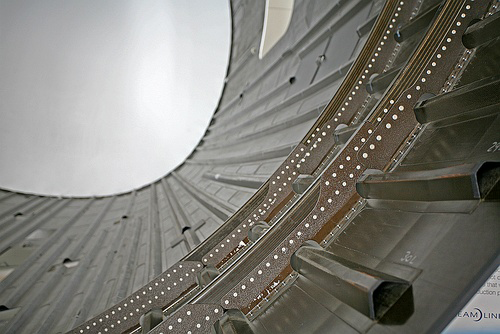Jan 09 2015 Multi-state cross-sector partnership advances composite material technology

The disassembled composite fuselage section of the Boeing 787. Composite materials are used on the 787’s fuselage, wings, tail, doors, and interior. (Wikipedia)
Cross-sector collaborations in research are gaining traction as a way to pool industry, government, and nonprofit expertise and resources to drive comprehensive approaches to innovation and knowledge creation.
A recent example is a public-private partnership to expand research, development, and job creation in composite material technology. The Institute for Advanced Composites Manufacturing Innovation brings together multiple states, more than 90 manufacturing companies across the region, academic partners, and the U.S. Department of Energy. Indiana is the latest state selected to participate in the partnership and will receive up to $15 million in matching federal investment related to composite materials. The Institute is funded at $259 million over five years based on commitments from industry, universities and its six partner states.
Indiana’s bid for participation in the partnership was driven by Purdue University, which plans to launch the Design, Modeling and Simulation Enabling Technology Center, one of five major research centers created as part of the initiative, according to the Indiana Economic Development Corp. The center will focus on knowledge-transfer, with the goal of increasing the affordability of composite manufacturing.
“Composite materials are revolutionizing the manufacturing sector, especially in Indiana,” said Victor Smith, Indiana Secretary of Commerce. “With this added bolt of support, composite material technology will help lift the future of advanced manufacturing in Indiana in partnership with our universities, national labs, and neighboring states.”
Composite materials are formed by blending different structural compounds together to create a better product, for example replacing metals on cars and airplanes with lighter, stronger and more energy-efficient composites.
While sectors have differing cultures, languages, practices, and norms, they can lend unique resources, expertise, and assets that build capacity to address industry-wide challenges. Cross-sector partnerships like The Institute for Advanced Composites Manufacturing Innovation hold promise not only to increase industry knowledge, but also to affect large scale change in manufacturing, safety, and local and national economies.
